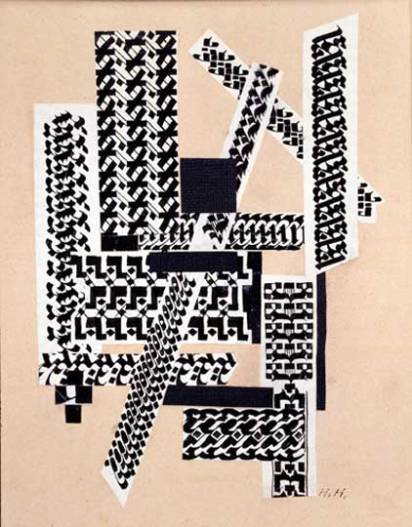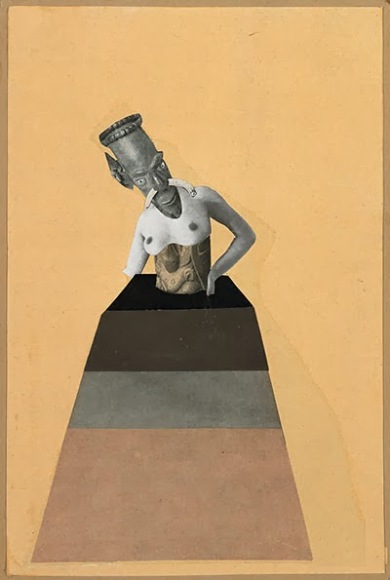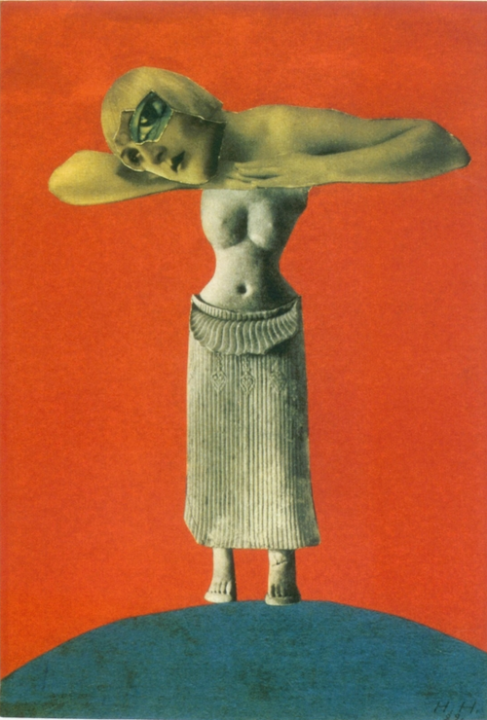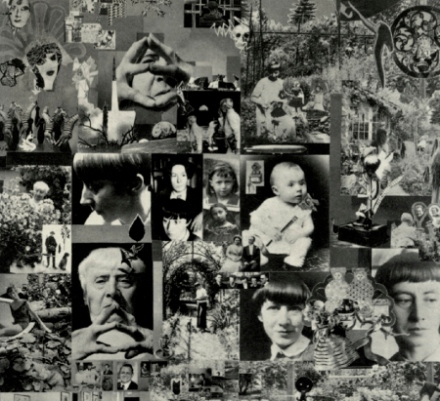Today is International Women’s Day and a special day in the Sweet ‘Art calendar as we launched this time last year with our show #1. Sweet ‘Art has been built on a foundation of the kind of celebration and inclusion that International Women’s Day stands for and we are already making plans for a special Women’s Day event next year.
I recently visited the Hannah Hoch exhibition at the Whitechapel gallery and felt it was the perfect exhibition to post about today.
Hoch has been described as one of the most influential and important collage artists of the 20th century and the show presents over 100 photomontages, water colours and works combining several mediums, created over six decades.
It begins with her early art clearly influenced by her work in fashion with her use and referencing of dress patterns and textiles that shows evidence of Hoch beginning to get a taste of exploring abstraction and appreciating its possibilities as a tool for subverting the norm.
Reed Pen Collage (1922)
This playing with abstraction and its ability to push boundaries is something that I find fascinating in art and I am always struck by art’s ability to reflect and subvert society, to transcend barriers and challenge oppression both on political and personal levels.
This can be seen in Hoch’s later works primarily produced in her Dada period where she applies the fragmentation and abstraction of earlier works and utilizes this to challenge and comment on many social issues of the time.
Her collages focusing on the notion of beauty as a social construct within certain gender norms of which works from the ‘From an Ethnographic Museum’ series are typical, these for me felt to be the most moving and thought provoking of the exhibition.
Untitled (from an Ethnographic Museum) 1929
She appears to illustrate a passion for a belief that I share, that art can reflect, question, subvert and ultimately change society yet can also fulfill and soothe personally.
From 1939 onwards Hoch created all her works in hiding in a tiny cottage on the outskirts of Berlin, avoiding Nazi scrutiny. As a Dadaist she struggled and in my opinion succeeded in asserting her self and her abilities in a male dominated scene, so often hostile to women.
As a bisexual woman whose artwork challenged the status quo, hiding from Nazi scrutiny seemed well advised. However I am also struck by Hoch always being the outsider and its link to her use of abstraction and fragmentation, in possibly sharing a sense of oppression. Art has a capacity to convey meaning in an alternative way to other forms of language, hiding true meaning when necessary for those defined as ‘other’. For me there is a possibility that Hoch did find a safe space to be bold in her creations in the face of oppression.
Despite the addressing of such sensitive subject matters there is an element of humour and wit that cannot be ignored in her works. For me she has used humour consistently which in a sophisticated way aggressively ridicules that which it seeks to challenge, subsequent laughter not being a response to quaintness but to a dark absurdity.
Untitled (From an Ethnographic Museum) 1930
On viewing ‘Untitled’ (above) ‘From an Ethnographic Museum’ series I was moved by her challenge of a socially constructed notion of beauty and the way this work conveys the idea that there is not one standardized idea of beauty but that it can exist within something far more complex, interesting and potentially flawed. This abstraction and fragmentation of the female form for me represents something far more real, more human and paradoxically more complete.
I also found myself unexpectedly interested in the condition of the works. Some are presented in glass cases laying down, rather than hanging and I wondered if this were a curatorial decision based on the fragility of the works. I noticed the faded paper of some pieces and the yellowing of glue on others causing some fragments to peel very slightly. I was struck by the metaphor of these bold important statements somehow ‘not sticking’ or not lasting. I consider these challenges to damaging notions of beauty and gender norms, some of the works created over 80 years ago by a woman consistently perceived as ‘other’ and I am drawn to reflect on International Women’s Day and all it may stand for.
Also the fundamental feminist belief that all should be valued in society and that those considered ‘other’ by social norms for whatever reason should be respected and celebrated. I am left with some sadness that new generations continue to ask the similar questions and challenge similar social injustices as Hoch hoped to.
I left this exhibition feeling very moved as I reflected on one of my favorite pieces in the show. ‘Life Portrait’ (below) for me evoked several thoughts. Thoughts of the significance of this one woman that was the creator of this tour de force of a show. Of the fragility of the objects she created, often in hiding, that can pack such a punch and still speak relevant volumes, and of knowing how far we have come and yet feeling inspired to do more.
Life Portrait (Detail) 1972 -73
Corrina Eastwood




